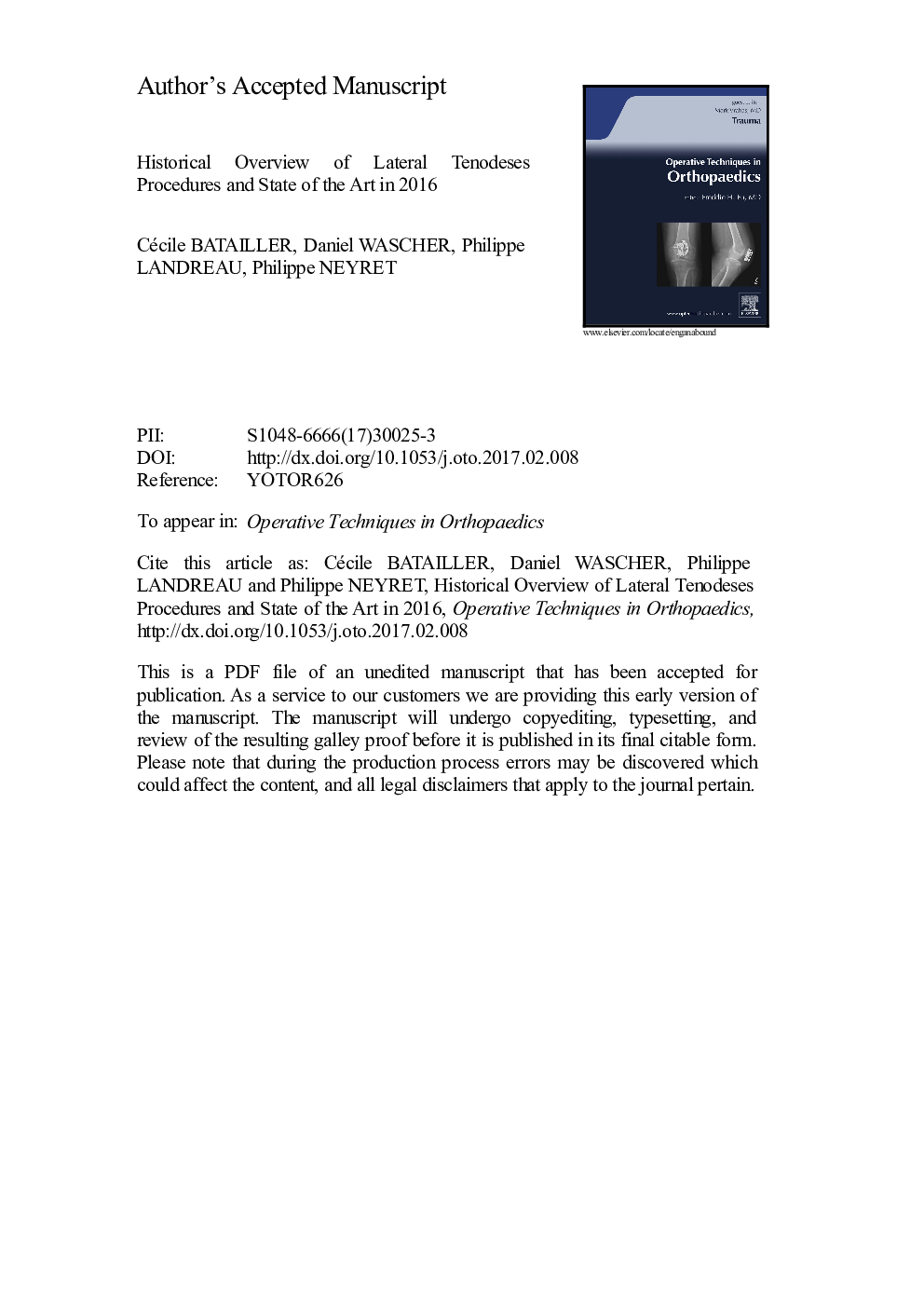| Article ID | Journal | Published Year | Pages | File Type |
|---|---|---|---|---|
| 5710877 | Operative Techniques in Orthopaedics | 2017 | 19 Pages |
Abstract
Since the original descriptions of the lateral capsuloligamentous complex of the knee, this structure (also known as the anterolateral ligament [ALL]) has been known to be commonly injured at the time of anterior cruciate ligament (ACL) injury. Surgeons have sought to reconstruct the ALL in ACL-deficient knees with the goal of restoring normal kinematics. Numerous surgical procedures have been developed over the last 50 years to correct the pathologic anterior and rotatory laxity seen with ACL tears. Initially, isolated lateral extra-articular tenodesis procedures were used. These procedures corrected the pathologic internal rotation laxity but their inability to adequately control anterior tibial translation led to a high rate of failure. Therefore, isolated lateral tenodesis procedures have fallen out of favor. With the advent of arthroscopy, isolated intra-articular ACL reconstructions became more popular. Some surgeons performed an additional lateral tenodesis procedure in conjunction with an intra-articular ACL reconstruction. Although these combined procedures have been abandoned by many surgeons, long-term results of these reconstructions have been encouraging. Because of the persistence of a pivot shift in some patients after isolated intra-articular ACL reconstruction, there has been a renewed interest in the anatomy and biomechanics of the ALL. Most recently, several authors have described an “anatomic” ALL reconstruction. Although early clinical results of these ALL reconstructions are encouraging, ongoing studies are still needed to better understand the biomechanical effects of these procedures on knee kinematics and on the intra-articular graft. The specific indications for lateral tenodeses and the ideal technique have yet to be determined.
Related Topics
Health Sciences
Medicine and Dentistry
Orthopedics, Sports Medicine and Rehabilitation
Authors
Cécile MD, Daniel MD, PhD, Philippe MD, Philippe MD, PhD,
